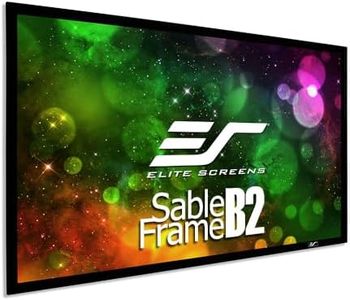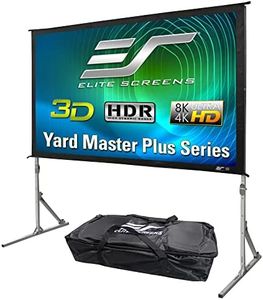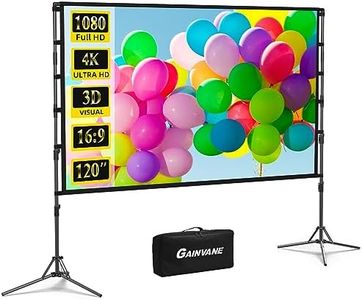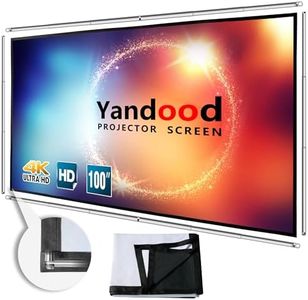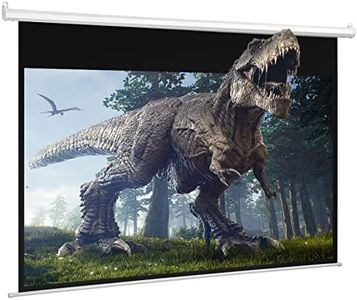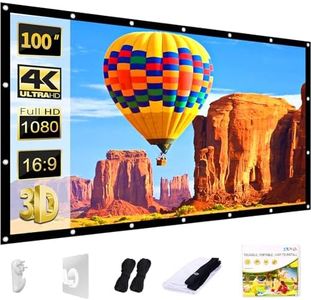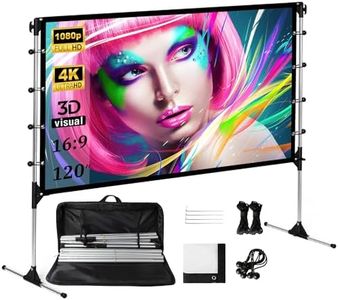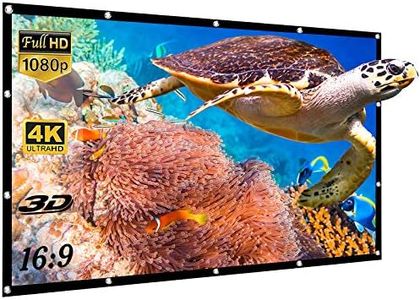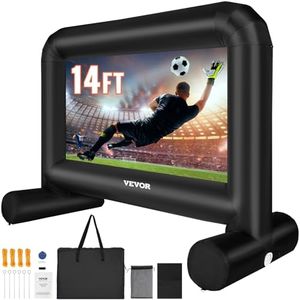We Use CookiesWe use cookies to enhance the security, performance,
functionality and for analytical and promotional activities. By continuing to browse this site you
are agreeing to our privacy policy
10 Best Outdoor Projector Screens
From leading brands and best sellers available on the web.By clicking on a link to a third party's website, log data is shared with that third party.
Buying Guide for the Best Outdoor Projector Screens
Choosing the right outdoor projector screen can hugely enhance your movie nights or backyard parties. The goal is to pair your projector with a screen that brings out the best in picture quality, fits your available space, and suits the kind of use you have in mind. Think about where and how often you'll use the screen, the size of your audience, and whether you'll need to move or store it frequently. By understanding the key factors that define a suitable outdoor projector screen, you can make a choice that will keep your outdoor entertainment hassle-free and enjoyable.Screen SizeScreen size refers to the diagonal length of the viewing area and is one of the first things to consider. A small screen (under 80 inches) works well for intimate gatherings or limited spaces, while medium screens (80-120 inches) are a good fit for average backyard setups. Large screens (over 120 inches) are best for bigger crowds or if you want an immersive experience, as long as your projector has enough brightness. To choose the right size, think about your available space and the typical viewing distance—ideally, viewers should sit 1.5 to 2.5 times the diagonal length away from the screen.
Screen Material and GainThe material of the screen influences how vivid and bright the projected image will look. 'Gain' measures how much light the screen reflects towards viewers: a gain of 1.0 means the screen reflects light evenly, while higher gain screens make images look brighter but narrow the viewing angle. Low-gain screens (0.8 or less) are good for wide viewing angles and if you have a powerful projector. Standard gain (about 1.0) is versatile for most situations. High-gain screens (1.2 or above) are helpful if your projector isn’t very bright, but the image might look less uniform from side angles. Select based on your projector’s brightness and how your audience will be positioned.
Portability and SetupSome outdoor projector screens are designed to be set up and taken down quickly, while others are meant to stay in place. Lightweight, foldable, or inflatable screens are easy to transport and set up—ideal for users who move between locations. Fixed-frame screens are more stable and provide a flatter viewing surface but are harder to move. Consider how often you’ll need to move or store the screen. If frequent portability is important, pick models that come with carrying bags and require minimal assembly.
Aspect RatioAspect ratio describes the shape of the screen—common ratios are 16:9 (widescreen), 4:3 (traditional TV), and sometimes 2.35:1 (cinematic widescreen). The right aspect ratio depends on what kind of content you watch: movies and most modern video content are in 16:9, while older TV shows might be 4:3. For general outdoor use, 16:9 is usually the safest choice. Match your projector’s aspect ratio to the screen for the best results and to avoid black bars around the image.
Weather Resistance and DurabilitySince outdoor screens must face various weather conditions, their materials and construction should withstand wind, sunlight, and moisture. Some screens are made from weatherproof fabrics and have rust-resistant frames or stakes for stability. If you plan to leave the screen outside for extended periods, focus on UV resistance and materials that won’t be damaged by rain. If your use is occasional, simple and easily stored screens may suffice, but always ensure they are sufficiently sturdy against breezy conditions.

